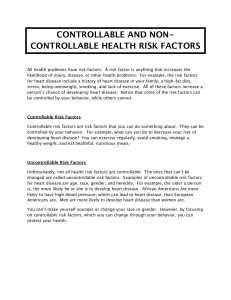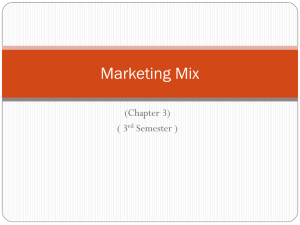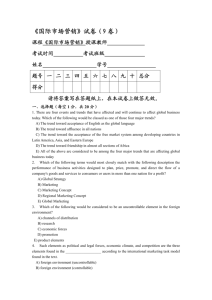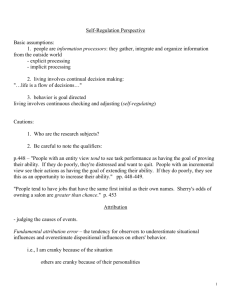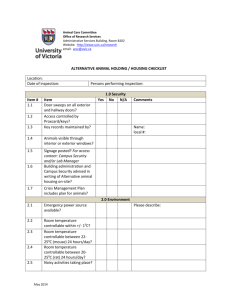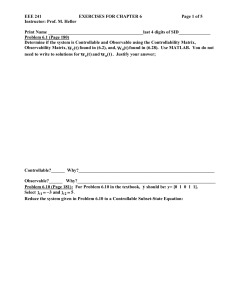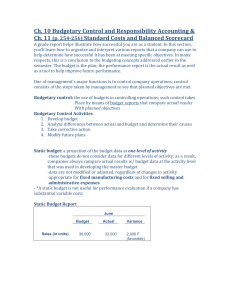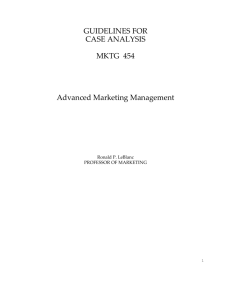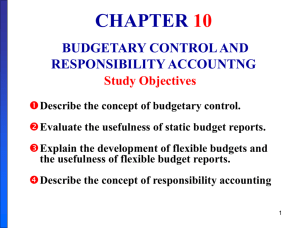Analysis of Controllable Variables in Marketing: Home Accessory
advertisement
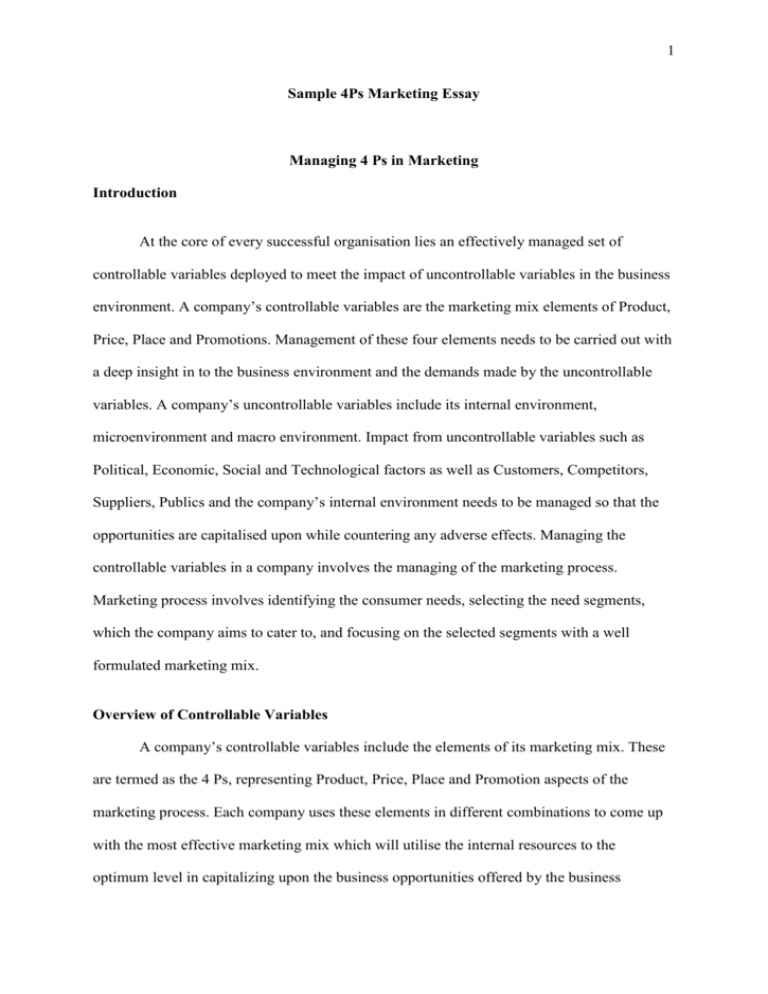
1 Sample 4Ps Marketing Essay Managing 4 Ps in Marketing Introduction At the core of every successful organisation lies an effectively managed set of controllable variables deployed to meet the impact of uncontrollable variables in the business environment. A company’s controllable variables are the marketing mix elements of Product, Price, Place and Promotions. Management of these four elements needs to be carried out with a deep insight in to the business environment and the demands made by the uncontrollable variables. A company’s uncontrollable variables include its internal environment, microenvironment and macro environment. Impact from uncontrollable variables such as Political, Economic, Social and Technological factors as well as Customers, Competitors, Suppliers, Publics and the company’s internal environment needs to be managed so that the opportunities are capitalised upon while countering any adverse effects. Managing the controllable variables in a company involves the managing of the marketing process. Marketing process involves identifying the consumer needs, selecting the need segments, which the company aims to cater to, and focusing on the selected segments with a well formulated marketing mix. Overview of Controllable Variables A company’s controllable variables include the elements of its marketing mix. These are termed as the 4 Ps, representing Product, Price, Place and Promotion aspects of the marketing process. Each company uses these elements in different combinations to come up with the most effective marketing mix which will utilise the internal resources to the optimum level in capitalizing upon the business opportunities offered by the business 2 environment (Armstrong & Kotler 2000). These controllable factors are also used in lessening or countering the adverse effects resulting from the environmental factors, which are largely beyond the company’s span of control. It is important that companies consider factors such as internal resource levels, its core competencies and the company’s overall vision and objectives when planning out the controllable variables in its marketing process (Thomson & Strickland 2004). Companies differ in their manner of controlling the marketing mix and the importance placed upon each controllable variable will depend upon the market situation, targeted segments, the product positioning strategies and the overall business objectives (Wisner 1996). Product Element The product element is the most crucial element of the marketing mix and needs to be offered with the required level of quality and with an ability to satisfy the need it is catering to. Broadly defined, the products include “physical objects, services, persons, places, organisations, ideas or a mix of these entities” (Armstrong & Kotler 2000). A product is not merely a tangible object but a mix of elements. There are three levels, which form the overall product, which includes the core product, actual product and augmented product. The core product is the actual key benefits and problem solving offered by the product. The next level of product is designed around this core product. The actual product, which is the second level of the product, includes quality, features, design, brand name and packaging. The third level, which is the augmented product, aims at offering additional services and benefits to add value to the product. This perspective of product element indicates the variety of choice the companies have in forming the product offer. Price Element 3 Price can be defined as the “sum of values, which a consumer exchanges for the benefits derived from a product or service” (Armstrong & Kotler 2000). This is one of the most flexible elements in the marketing mix as it can be changed quickly and largely controlled by the company. But many companies fail in their pricing decisions due to reasons such as not revising prices often enough to reflect market changes, pricing being too cost oriented, pricing not being compatible with the rest of the marketing mix and not having prices to suit different market segments. Pricing decisions of a company is affected and influenced by a host of internal and external factors. The company’s marketing objectives, marketing strategy, cost structure as well as other organisational considerations will affect the pricing decisions at an internal level. External factors such as the market conditions, competition as well as other environmental factors such as status of economy, number of resellers involved in the distribution chain and the government price controls will also affect the pricing decisions of a company. Place element Organisations use intermediaries in the process of taking their product to the consumers. Distribution Channels are formed with a “set of interdependent organisations involved in the process of making a product or service available for use or consumption by the consumer or business user” (Stern et. al. 1996). Some companies are still using conventional channels of distribution where there is little control over each other within the channel members and the individual decisions are made with own profit maximization intentions rather than with overall effectiveness of the channel in mind. The difference between a Conventional marketing channel and a Vertical Marketing System (VMS) is that in a VMS, the members wield high level of power over each other through ownerships, contractual agreements or scale of volumes. Therefore the decision making in a VMS is more integrated and consumer oriented. 4 Promotions Elements Promotions element in the marketing mix is used to communicate the features of the rest of the marketing mix elements to the targeted consumers. More and more companies are now resorting to practice what is being termed as Integrated Marketing Communication (IMC), which involves coordinating various promotional elements along with other marketing activities to communicate with a firm’s customers (Fitzgerald 1988). Traditionally the companies used the promotional element in isolation and in ad-hoc manner. However with the concept of IMC, firms seek to create cohesion between all the promotional elements utilized so that the projected image is a unified. Today the promotional tools available for marketing communicators has expanded to include innovative interactive modes such as the web and media options have changed dramatically over the decades. Advertising, which is considered the strongest element of the communication mix, is defined as any paid form of no personal communications about an organization, product, service or idea by an identified sponsor (Belch & Belch 2004). With the advent of the Internet, the direct marketing means have widened and have brought in newer interactive media such as websites. Direct marketing can be in the form of direct response advertising, direct sales, telemarketing, direct mail shots and email campaigns (Shultz & Barnes 2001). Sales Promotions refers to those marketing activities, which provide extra value or incentives to the sales force, distributors or to the ultimate consumer with the aim of stimulating sales volumes (Belch & Belch 2004). Public Relations is the management function, which evaluates public attitude, identify the policies and procedures of an organization with the public interest and execute programs of actions to earn the public 5 understanding and acceptance (Harris 1998). Personal selling involves any form of direct selling carried out by the company’s sales force. In conclusion, it can be noted that organisations have a wide choice of decisions in choosing how they intend to manage the controllable variables in the marketing process. The need for constantly monitor the impact of the uncontrollable variables in the environment and modify the controllable variables in the marketing mix is the challenge for the marketing personnel. Each company’s combination of marketing mix elements will differ based on internal and external factors. Organisational capabilities and resources as well as organisational goals will impact on how the controllable variables are managed. Importance placed upon each element of the marketing mix will vary according to the markets being served and in line with the organisational objectives. Lastly it can be noted that with innovative approaches and flexibility, companies can make use of the wide choice of decisions pertaining to controllable variables and formulate their marketing strategies to achieve a sustainable competitive advantage.
